

If the amount of parts per shift in your production milling operation is an important factor in determining your profitability, then this information will help you to see that your workholding choices can significantly affect your productivity outputs.
Manufacturing Managers typically seek productivity gains through their knowledge of tooling, feeds, and speeds. Reducing cycle times through feed time improvements is a worthy endeavor.
If you were to study the Run Time of your average job being processed in your milling department, you will discover that feed time, or the amount of time your CNC is actually cutting, is on average only 40-50% of your over-all run time. So what’s the other 50% of your non-cutting time? In Turn-Table environments, it’s mostly tool changes, probing, tool verification, and rapid movements.

Generally, manufacturers are focused on achieving a certain cycle time quoted, with much of their energy directed towards feed time improvements. Let’s ask some questions about non-feed time activities and investigate how workholding can improve your outcome.
Additionally, operator attendance can be reduced by as much as 50%, and the total number of tasks an operator has to perform are exponentially decreased.




The following productivity analysis is a look at two production milling scenarios, both using a turn-table CNC Mill. Let’s look at the true cost, and the opportunity, of how your workholding decisions can greatly affect the productivity and output of a given eight hour shift. The concept we are presenting here is the idea of holding 16 parts in an automated clamping system versus standard hand clamping 1 part on a vise type system.
| CNC Productivity Inputs per Shift | |
|---|---|
| 8 Hour Shift Time | 28,800 sec |
| Number of Tool Changes per Cycle | 10 |
| Feed and Rapid Time per Part | 30 sec |
| Chip to Chip Time | 1.7 sec |
| Pallet Change Time | 2.9 sec |


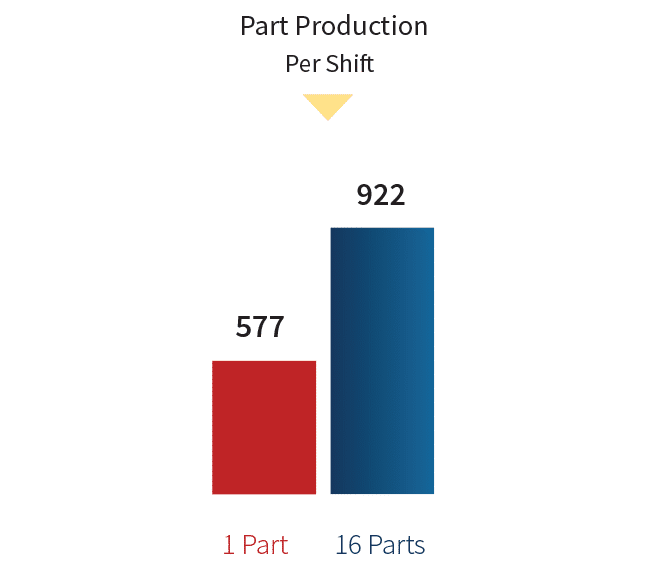
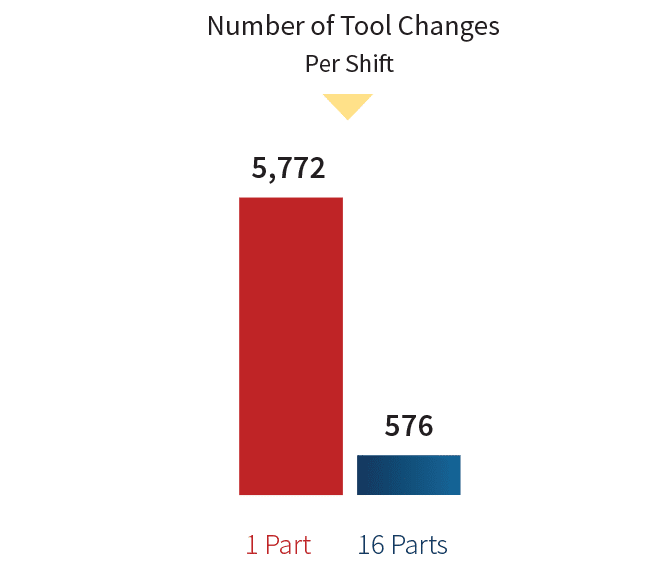
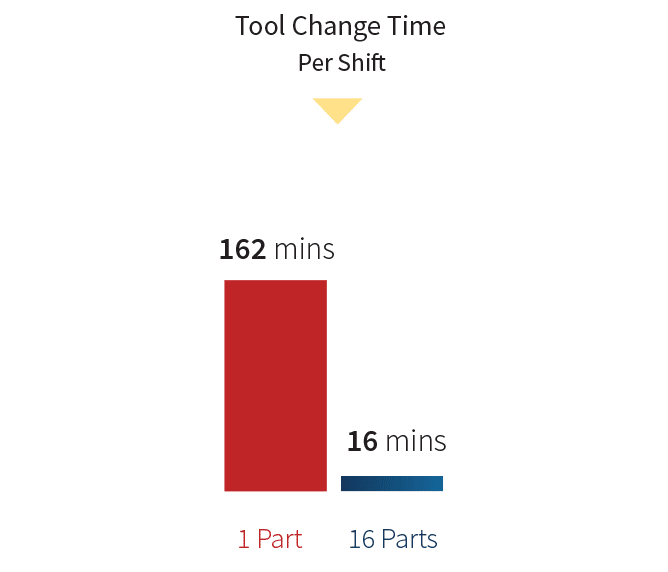

Labor is often overlooked, especially in a turn-table milling environment where most consider operator time to be free since the machine is still running during loading operations. However, there are benefits to reducing operator attendance. What could CNC operators do with twice as much available time? Run multiple machines, perform more quality checks on parts or produce more parts each shift by facing less fatigue.
| Task Time Per Cycle | Cycles Per Shift |
| Labor Tasks Per Cycle | 1 Part | 16 Parts | 1 Part | 16 Parts |
|---|---|---|---|---|
| Clamp/Unclamp, Load/Unload | 16 sec | 68 sec | 577 | 58 |
| Blow Off Parts and Fixture | 5 sec | 48 sec | 577 | 58 |
| Set Parts with Hammer | 5 sec | 32 sec | 577 | 58 |
| Open and Close Doors | 5 sec | 5 sec | 577 | 58 |
| Press Cycle Start | 3 sec | 3 sec | 577 | 58 |
| 34 sec | 156 sec | 2,885 tasks |
290 tasks |


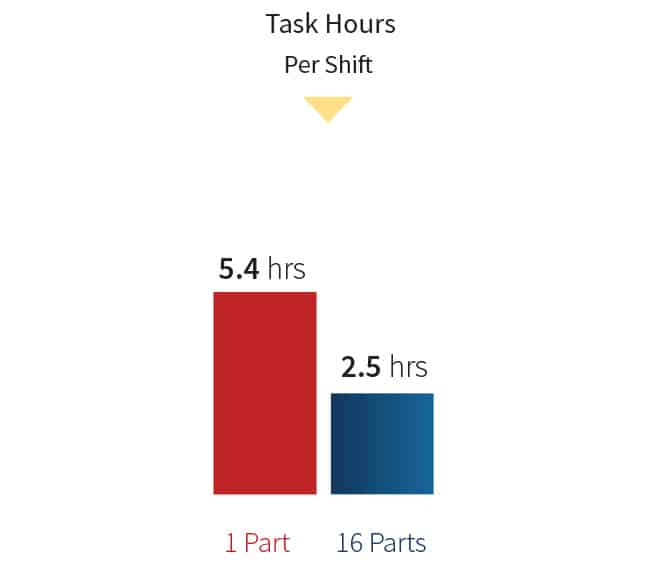
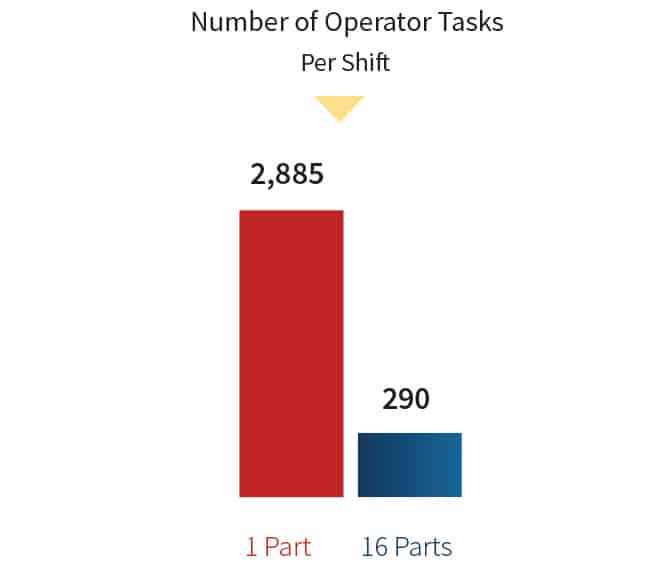
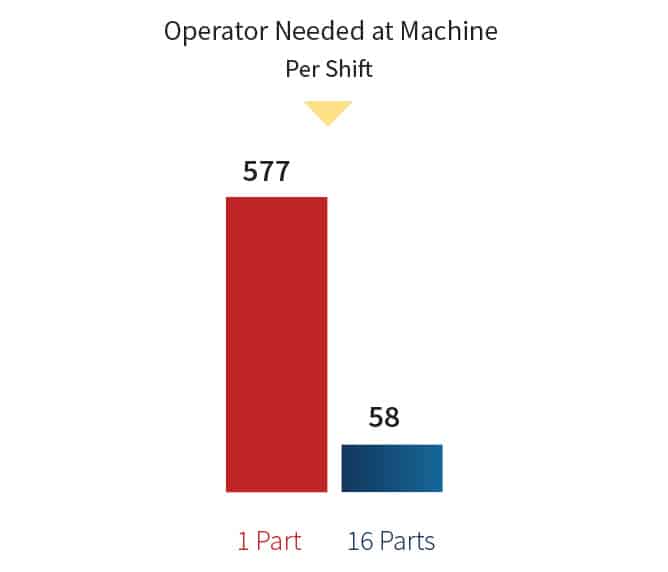





Load/Unload Time by 50%




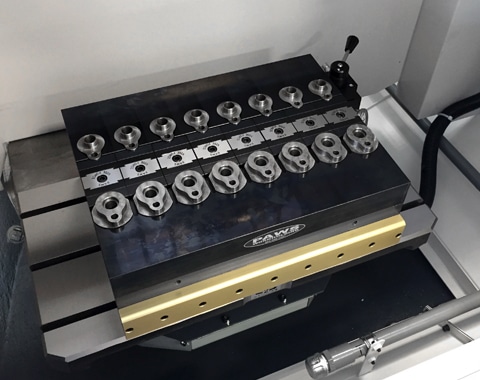

Implementing a multiple-part workholding system with automated clamping into your milling environment will undoubtedly increase your company’s productivity and profitability.
Oftentimes, workholding gets lost in the equation when working out the details of a manufacturing process. Much of the focus goes into the CNC Machine, tooling and programming.
There is gold to be mined in your manufacturing processes if you know where to look. So, how much are you leaving on the table each shift?

PAWS Workholding is an innovative leader in workholding solutions for OEM’s and high volume Contract Manufacturers. Through the use of multiple-part workholding and automation, our team delivers engineered solutions that produce unmatched efficiency gains and precision.

We offer a variety of standard turn-key products as well as custom engineered solutions to fit nearly any workholding need and application.
Standard Product
- 8 Station 5C Collet
- 24 Station 5C Collet
- 8 Station 3J Collet
- Vise System
- Workholding Clamps
Custom Solutions
- ID Collet
- Fourth Axis Trunnion
- Horizontal Tombstone
- Multiple Part Fixture Plates
- Pallet Changing


